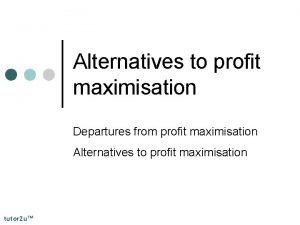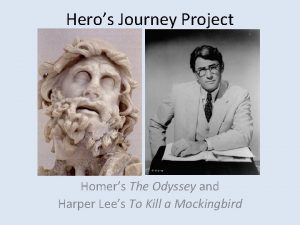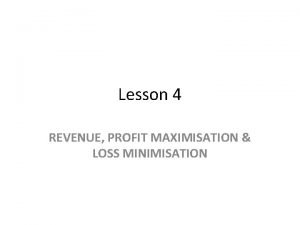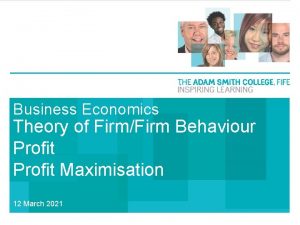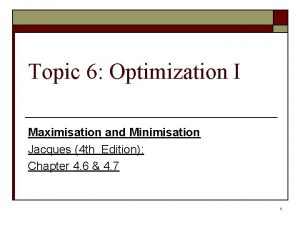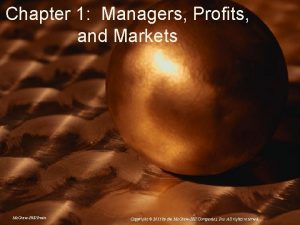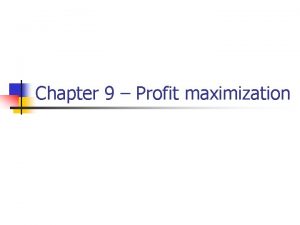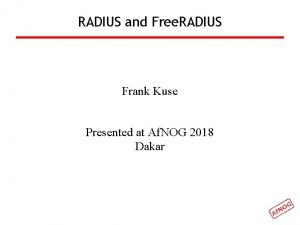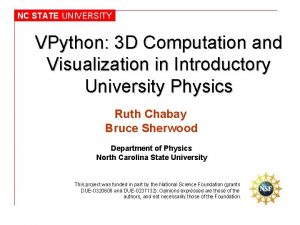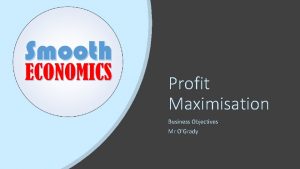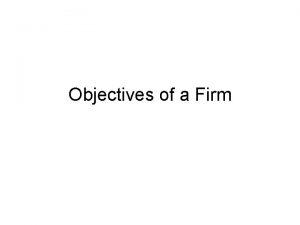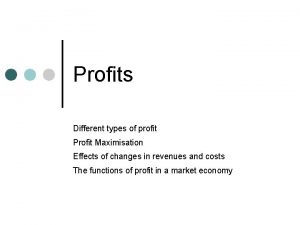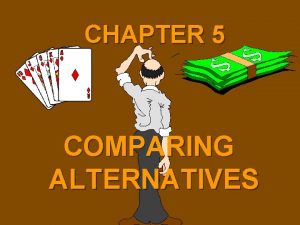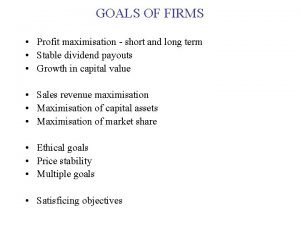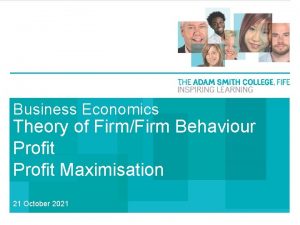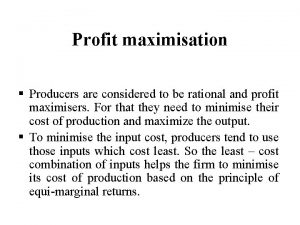Alternatives to profit maximisation Departures from profit maximisation











- Slides: 11

Alternatives to profit maximisation Departures from profit maximisation Alternatives to profit maximisation tutor 2 u™

Herbert Simon - The Satisficing Principle tutor 2 u™ ¢ Satisficing = Satisfy + Suffice ¢ No business can process all the factors affecting the marketing/pricing of a product, in the hope of maximising profit ¢ This theory is known as “bounded rationality” ¢ The complexity of decisionmaking may lead to managers following “rules of thumb” rather than seek optimal decisions all of the time

Firm Objectives: Profit Maximisation ¢ Traditional Maximising Goals l Profit Maximisation • This objective assumes that owners control the management of the business • Also requires sufficient and accurate knowledge of cost and revenue conditions in the market so that MR and MC can be found l tutor 2 u™ The neo-classical assumption of all firms behaving in a manner that seeks to maximise profits is now questioned

Profit maximisation MC Price & Cost AC P 1 AC AR MR Q 1 tutor 2 u™ Output

Alternatives to Profit Maximisation tutor 2 u™ ¢ Sales revenue maximisation is achieved when MR = zero – beyond the output which maximises profits ¢ Normal profits - if a business wants to maximise output subject to making at least normal profit (I. e. the break-even output), then it will produce up to the output where AR = ATC ¢ Shareholders may introduce a constraint on the price and output decisions of managers – this is known as constrained sales revenue maximisation

Revenue maximisation MC Price & Cost AC P 2 AC AR Q 2 MR tutor 2 u™ Output

Normal profits Price & Cost MC AC P 3=AC AR MR Q 3 tutor 2 u™ Output

Minimum Profit Constraint ¢ ¢ tutor 2 u™ Motivations? l Desire to receive an acceptable distribution of company profits from interim and final dividends l Dilution of profits may have a negative effect on the company’s share price on the stock market l In this way the stock market acts as a check on the behaviour and performance of each quoted company Output may change depending on whether or not sales revenue maximisation takes profits below this minimum level

The Rise of Social Entrepreneurship tutor 2 u™ ¢ A social enterprise is a business that has primarily social objectives whose surpluses are reinvested for that purpose in the business or the community, rather than being driven by the need to seek profit to satisfy investors. ¢ A social enterprise is looking to achieve social and environmental aims over the long term. ¢ They may be profit seeking – but it is what they do with their profits that makes the difference

Examples of social enterprises tutor 2 u™ ¢ Café Direct ¢ Fair Trade ¢ Traidcraft ¢ Divine Chocolate ¢ Eden Project ¢ Housing Associations ¢ Fifteen Foundation ¢ Fair Finance ¢ First Fruit ¢ Greenwich Leisure ¢ Brentford FC.

Not for profit businesses These are charities, community organisations that are run on commercial lines - an example is Network Rail tutor 2 u™ ¢ Network Rail - Took over the rail network in October 2002 ¢ Stated purpose is to deliver a safe, reliable and efficient railway for Britain. ¢ It is a company limited by guarantee – whose debts are secured by the government ¢ Network Rail is a private company operating as a commercial business and regulated by the Office of Rail Regulation ¢ Network Rail is a "not-for-dividend" company, which means that all of its profits are invested in the railway network. ¢ Train operating companies pay Network Rail for use of the rail infrastructure
 Alternatives to profit maximisation
Alternatives to profit maximisation Departures odyssey project
Departures odyssey project North satellite concourse
North satellite concourse Profit maximization
Profit maximization Sales revenue maximisation theory
Sales revenue maximisation theory Maximisation and minimisation
Maximisation and minimisation Economic profit vs accounting profit
Economic profit vs accounting profit Post acquisition profit is which profit
Post acquisition profit is which profit Normal profit vs economic profit
Normal profit vs economic profit Freeradius alternatives
Freeradius alternatives Ruth chabay
Ruth chabay Alternatives to westlaw
Alternatives to westlaw
